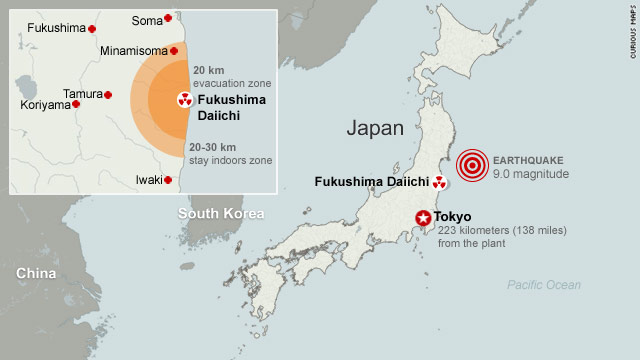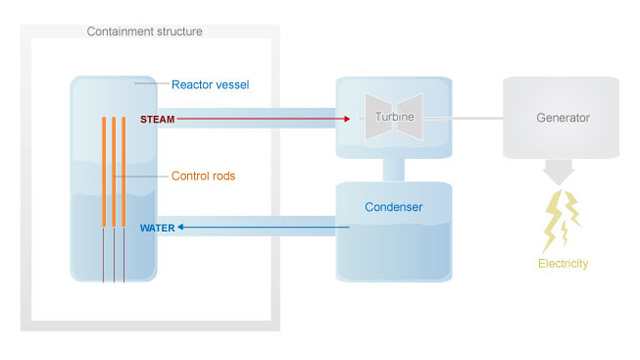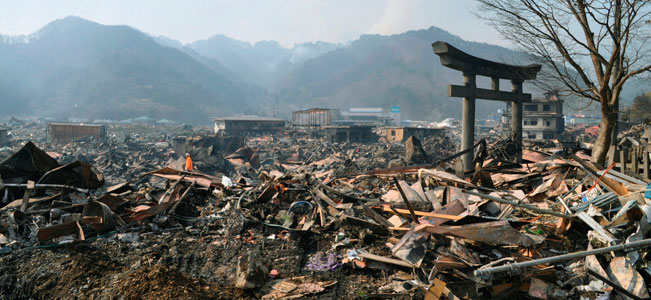Tokyo (CNN) -- Technicians restored power to the control room of the No. 3 reactor at the quake-damaged Fukushima Daiichi nuclear power plant, the station's owner reported late Tuesday.
Tokyo Electric Power Company said it was able to confirm power by turning the control room's lights on. The next step, the company said, is to get air conditioning in the room so workers can enter and work there.
The No. 3 reactor has been a top priority for authorities trying to contain damage to the plant and stave off a possible meltdown. Its fuel includes a small percentage of plutonium mixed with the uranium in its fuel rods, which experts say could cause more harm than regular uranium fuels in the event of a meltdown.
Restoring power at the plant is a key step that officials hope will allow them to bring cooling systems back online.




Earlier Tuesday, Tokyo Electric Vice President Sakae Muto said the No. 1 and No. 2 reactors at the plant suffered more damage from seawater than originally believed and will take more time to repair.
The tsunami that followed the 9.0-magnitude earthquake March 11 damaged electrical components and coolant pumps in units No. 1 and 2. Those are two of the three units now believed to have suffered damage to their reactor cores, Muto said.
Reactor No. 2 suffered more damage than No. 1, and the earliest those parts can be replaced is Wednesday, Muto said. The cause of the damage was unclear, but seawater was pumped in previously to cool the reactors as an emergency measure after the earthquake.
Reactors No. 3 and 4 were still being evaluated to determine which parts need repair or replacement, he said, adding that restoring lighting and air conditioning was a priority so crews can work from inside and gather further data.
Water was sprayed on the damaged housing of reactor No. 3 for about 50 minutes on Tuesday, and seawater was still being injected into the reactor core, Japan's Nuclear and Industrial Safety Agency said. Workers plan to spray over reactor No. 4 for three hours on Tuesday as well.
A faint trail of white smoke could be seen rising over the damaged nuclear plant earlier in the day. Japan's nuclear safety agency said it was not immediately clear why smoke was rising from the plant's No. 2 and No. 3 reactors. Tokyo Electric said in a statement that the smoke was decreasing and barely visible.
Officials temporarily evacuated workers from the plant Monday when smoke was spotted in the same area. But the agency said Tuesday that workers planned to continue efforts to restore power.
"This is going to be a two steps forward, one step back evolution," said Michael Friedlander, a former senior operator at three U.S. power plants who has been closely following the situation at the Fukushima Daiichi plant.
In terms of restoring power at the plant, workers are "on the verge of success," he told CNN's AC360.
But while work to reconnect cooling systems continued, workers and firefighters resumed spraying water at the buildings housing the No. 3 reactor Tuesday afternoon, Tokyo Electric said.




RELATED TOPICS
Crews also began using concrete pumps to pour water on the No. 4 reactor building, Kyodo News reported.
Workers have been scrambling to cool down fuel rods since the earthquake and massive tsunami earlier this month knocked out cooling systems at the plant.
Police say the dual disaster has killed at least 9,080 people and left at least 13,561 missing, many of them killed as a wall of water rushed in following the quake.
Officials say some radiation has been released from the crippled plant since the quake and tsunami. And with the nuclear plant's six reactors in various states of disrepair, concerns have mounted over a potentially larger release of radioactive material from the facility, located about 240 kilometers (150 miles) north of Tokyo.
Officials said Tuesday that electrical cables had been laid to connect the No. 3 reactor and the neighboring No. 4 reactor with an outside power source.
That meant that power can now be funneled to all six of the plant's reactors for its cooling systems. But Tokyo Electric said Monday that electricity was still not moving to units No. 1 through No. 4 because the quake and tsunami had damaged numerous pumps and other gear. The company said spare parts were being brought in so that everything could work again.
Hidehiko Nishiyama of Japan's Nuclear and Industrial Agency said there was no evident explosion, spike in radiation or injuries at the No. 3 reactor Monday. The smoke came from the building's southeastern side, where the reactor's spent nuclear fuel pool is located, but the origin of the smoke at either reactor was unknown.
A spent fuel pool is also a concern in the building housing the No. 4 reactor.
The coolant pools contain used fuel rods that contain radioactive material and still generate high amounts of heat. Authorities have been working to keep them full to prevent the rods from being exposed and releasing radiation.
"The crisis has still not been resolved, and the situation at the Fukushima Daiichi nuclear power plant remains very serious," Yukiya Amano, the director-general of the International Atomic Energy Agency told the U.N. watchdog's board of governors Monday after a visit to the site.
On the other hand, Amano told reporters, rising pressure inside the containment unit at reactor No. 3, a concern from the weekend, was down and power had been restored to some of the reactors.
About 660 workers were at the site Tuesday, Tokyo Electric said. About 330 of those were employees of the power company.
Authorities said potential food contamination remains a concern.
The Japanese government has banned the sale of raw milk from Fukushima Prefecture, where the plant is located, and prohibited the sale of spinach from neighboring Ibaraki Prefecture after finding levels of radioactive iodine and cesium higher than government standards, the country's health ministry reported.
And officials in Fukushima halted the distribution of locally grown vegetables outside the prefecture.
High levels of radioactive substances have also been found in seawater near the plant, Tokyo Electric said Tuesday, adding that the results do not represent a threat to human health.
"There should be no immediate health impact. If this situation continues for a long period of time, some impact can occur," Chief Cabinet Secretary Yukio Edano told reporters.


















